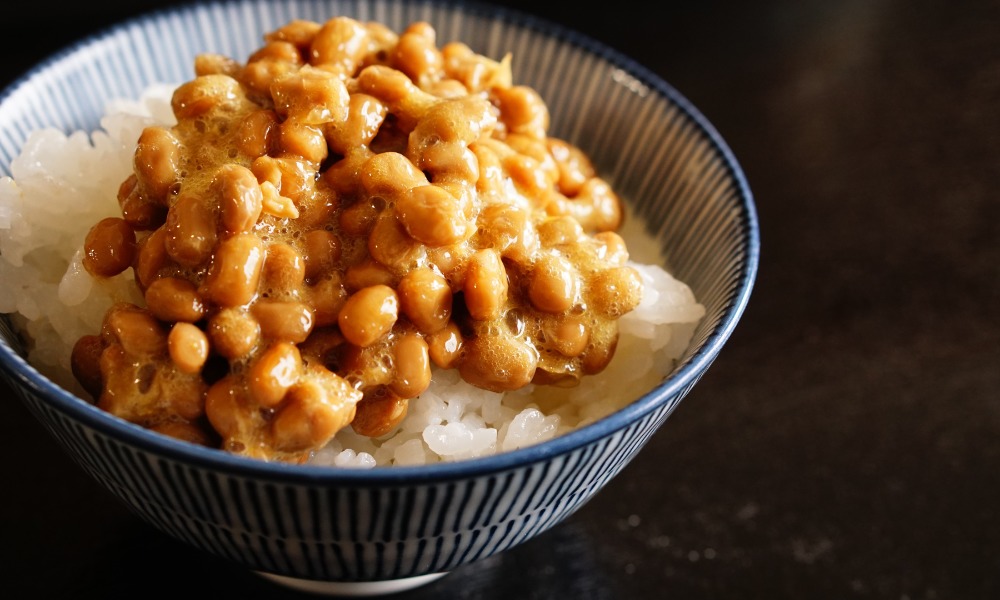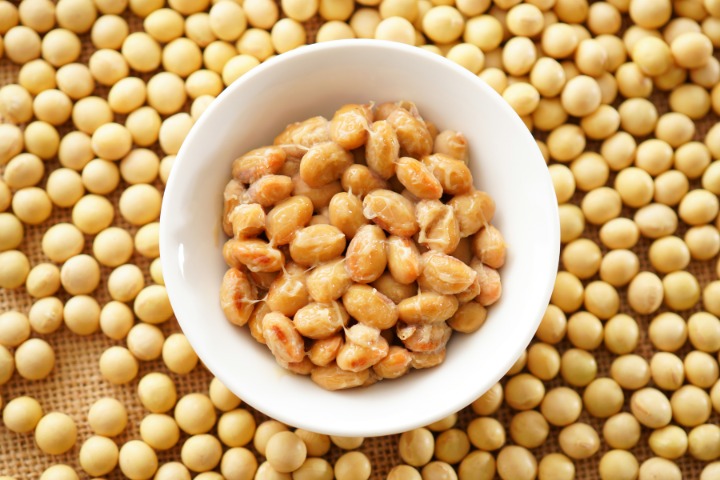Natto is a beloved staple of Japanese households. It is cheap and filling, providing a substantial meal even on a budget. It is quick and easy to prepare if you’re rushed for time in the morning. Natto is made from fermented soybeans which are steamed and mixed with bacteria. The natto is left to age and develop the sticky, stringyness it’s known for. The strong smell can sometimes put people off, but as its high in health benefits, most Japanese people cannot get enough of it! Let’s look a little deeper in natto.
The History of Natto
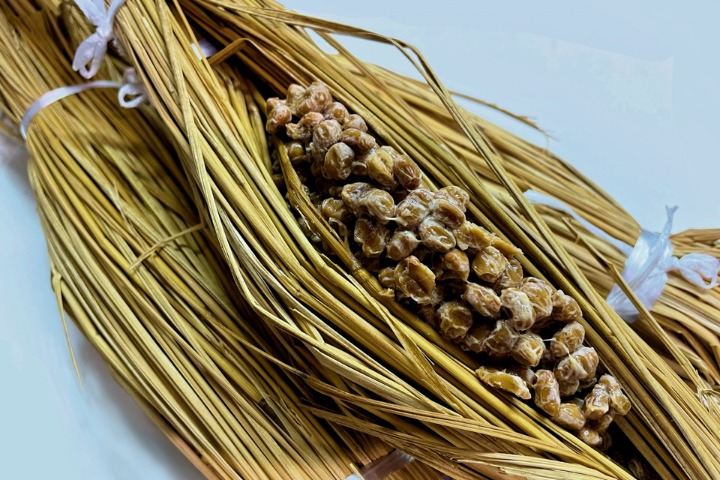
Image Credits: Laboko
Natto is believed to be centuries old, with the first accounts dating back to the 1050s. Back then, people wrapped the soybeans in straw and kept it close to their horse’s body. The heat from the horse would be enough to ferment the beans and turn them into natto. During the Taisho Era in the early 20th century, scientists created bacteria that could ferment soybeans to become natto. This increased the production and distribution of natto to a much larger scale. Since then, scientists have continued to experiment with bacteria to find a strain with less spoilage risk. In the mid-1970s, companies shifted to packaging their products in polystyrene paper, which they still use today.
Health Benefits
Image Credits: Canva
Natto is so popular in Japan due to its variety of health benefits. One small package contains 84% of the average daily iron intake and 38% of the vitamin C intake. Natto is high in fibre, which is easy to digest and does wonders for your gut health. It is perfect for those looking to increase their plant-based protein intake, with 34g in every metric cup.
Fermented soybeans are arguably a superfood, as it has been shown to lower the risk of type 2 diabetes and build the immune system against the threat of several cancers and heart disease. This is due to the high amount of polyunsaturated fat in one serving linked to lowering your “bad” cholesterol.
With all these positives, including the fact that it contains anti-inflammatories and antioxidants, it is no surprise that Japanese people incorporate natto into their diet.
Shopping for Natto

Image Credits: Author
You will find natto in a fridge near the vegetable section at the supermarket. It is hard to miss because there’s usually such a large stock available on the shelves! Natto is sold in packs of three for as little as 80 yen. You’ll find most packets of natto come with condiments such as yakiniku sauce and Japanese plum-flavoured black vinegar, but the most common type comes with Japanese mustard and sweet soy sauce.
Makers have even created a natto that doesn’t smell, which is perfect for those who cannot get past the usually pungent odor.
Best Way to Eat and Enjoy It
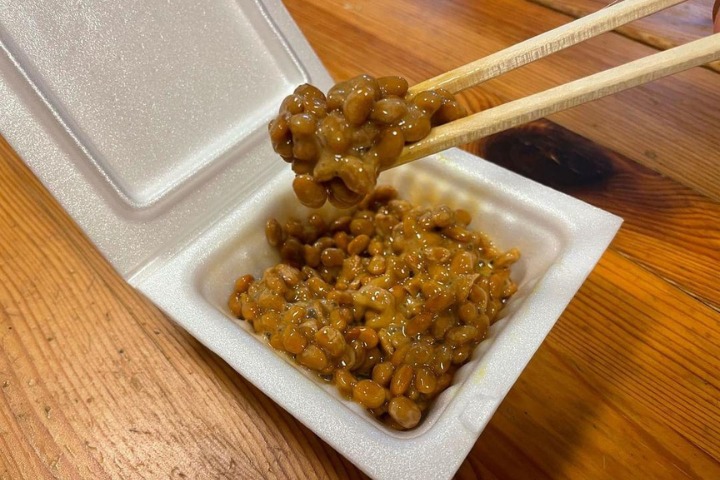
Image Credits: Author
To eat your natto, first remove the plastic wrapping and take out one of the packages. Natto needs to be stored in a chilled area until consumption, so place your other two packages in the fridge if you don’t eat them immediately. Remove the lid and then take out the sauce.
Pinch the plastic film off the natto, making sure you don’t get your hands too sticky. Or another method I like is poking the film with a chopstick, making a hole towards the top of the packaging, and pulling it through there. Either way you choose, after you remove the film, I recommend placing it ontop of the lid you just removed so you can dispose of it all together after you’ve finished.
Open the condiments and pour them over the natto. Some people like adding extra ingredients, such as regular soy sauce or white vinegar. Mix it with your chopsticks to soften the beans and get a stringy, almost gooey consistency. Then it’s ready to eat!
The most common option is to eat natto with rice due to the time and cost efficiency, but there are other great ways to eat natto, such as with an omelette or sushi rolls. Natto sushi is a tried-and-true favourite, regularly sold at supermarkets and sushi shops.
Will You Try Natto?
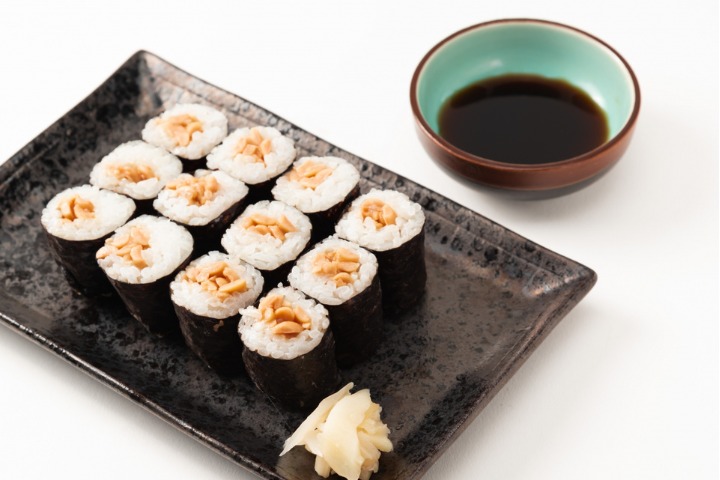
Image Credits: 仲居 宏之
Although the look and smell do not seem so appealing, forgive natto for its undesirable image and give it a go. The benefits outweigh the cons. After learning about its excellent nutritional value, I eat natto almost daily. The flavour grew on me, and even though it’s a small pack, it helps me reach my daily intake of iron and vitamin C. I can rest easy knowing the fermented beans in my belly are helping out my digestive system and lowering my chances of developing diabetes or heart disease. Maybe a natto pack a day will keep the doctor away.
Related Articles:
- Living Seasonally: Delicious Autumn Vegetables in Japan
- Soybeans – The Most Versatile, Essential Ingredient in Japanese Cooking
- How To Enjoy Sushi Like a Pro!
- Vegetarian Staples Convenience Stores in Japan
Soybeans – The Most Versatile, Essential Ingredient in Japanese Cooking
Featured Image Credits: Canva

